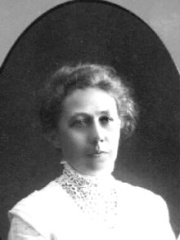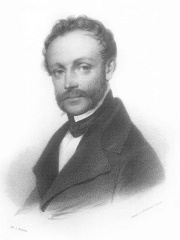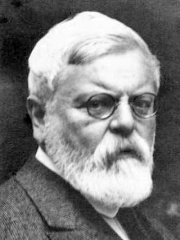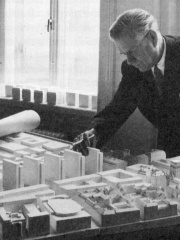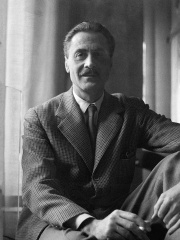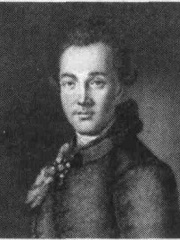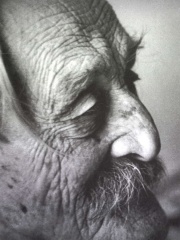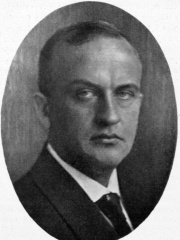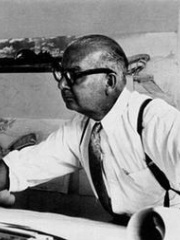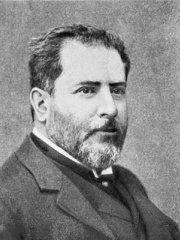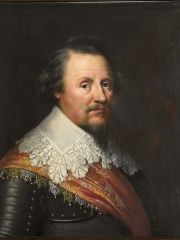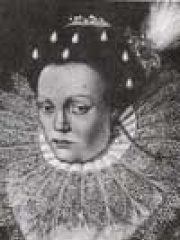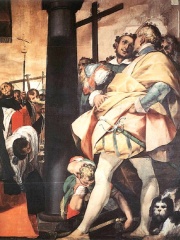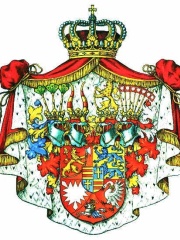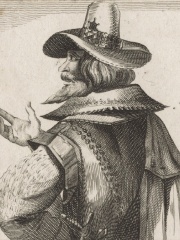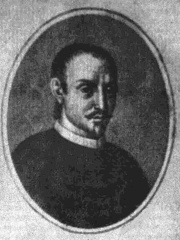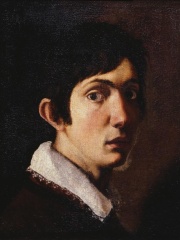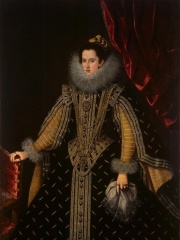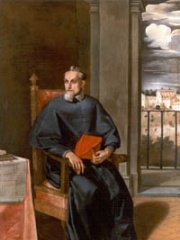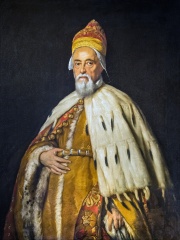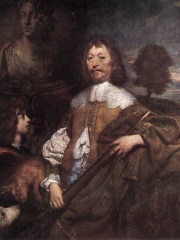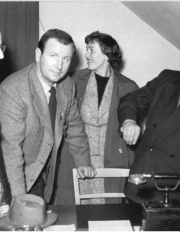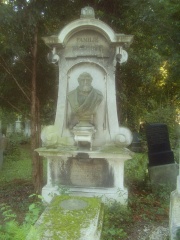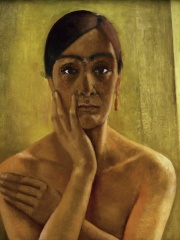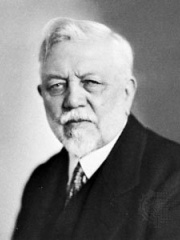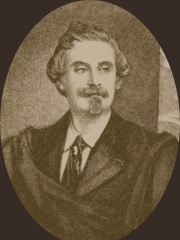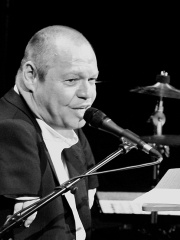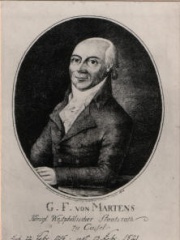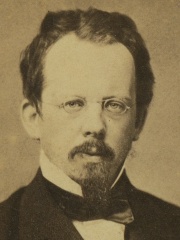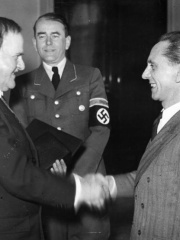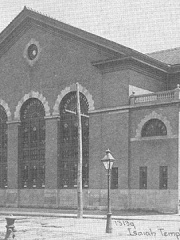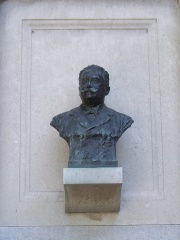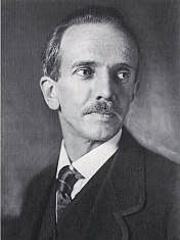ARCHITECT
Elias Holl
1573 - 1646
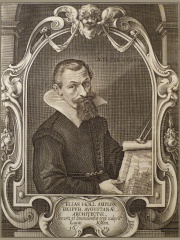
 Elias Holl
Elias Holl
Elias Holl (28 February 1573 in Augsburg – 6 January 1646 in Augsburg) was the most important architect of late German Renaissance architecture. Read more on Wikipedia
His biography is available in 15 different languages on Wikipedia. Elias Holl is the 438th most popular architect (down from 417th in 2024), the 4,765th most popular biography from Germany (down from 4,591st in 2019) and the 49th most popular German Architect.
Memorability Metrics
Page views of Elias Holl by language
Among ARCHITECTS
Among architects, Elias Holl ranks 438 out of 518. Before him are Wivi Lönn, Josef Gočár, Friedrich Ludwig Persius, Theodor Fischer, Sven Markelius, and Franco Albini. After him are Matvey Kazakov, Károly Kós, Jan Kotěra, Carlos Raúl Villanueva, Leon Benois, and Francisco Javier Sáenz de Oiza.
Most Popular Architects in Wikipedia
Go to all RankingsWivi Lönn
1872 - 1966
HPI: 55.78
Rank: 432
Josef Gočár
1880 - 1945
HPI: 55.78
Rank: 433
Friedrich Ludwig Persius
1803 - 1845
HPI: 55.68
Rank: 434
Theodor Fischer
1862 - 1938
HPI: 55.65
Rank: 435
Sven Markelius
1889 - 1972
HPI: 55.64
Rank: 436
Franco Albini
1905 - 1977
HPI: 55.60
Rank: 437
Elias Holl
1573 - 1646
HPI: 55.60
Rank: 438
Matvey Kazakov
1738 - 1812
HPI: 55.58
Rank: 439
Károly Kós
1883 - 1977
HPI: 55.51
Rank: 440
Jan Kotěra
1871 - 1923
HPI: 55.23
Rank: 441
Carlos Raúl Villanueva
1900 - 1975
HPI: 55.21
Rank: 442
Leon Benois
1856 - 1928
HPI: 55.17
Rank: 443
Francisco Javier Sáenz de Oiza
1918 - 2000
HPI: 55.15
Rank: 444
Contemporaries
Among people born in 1573, Elias Holl ranks 21. Before him are Ernest Casimir I, Count of Nassau-Dietz, Agnes Hedwig of Anhalt, Giovanni Battista Crespi, Alexander, Duke of Schleswig-Holstein-Sonderburg, Robert Catesby, and Pietro Carrera. Among people deceased in 1646, Elias Holl ranks 16. Before him are Francesco Furini, Margherita Aldobrandini, Antonio Marcello Barberini, Francesco Erizzo, Robert Devereux, 3rd Earl of Essex, and William Dobson.
Others Born in 1573
Go to all RankingsErnest Casimir I, Count of Nassau-Dietz
POLITICIAN
1573 - 1632
HPI: 61.74
Rank: 15
Agnes Hedwig of Anhalt
NOBLEMAN
1573 - 1616
HPI: 60.91
Rank: 16
Giovanni Battista Crespi
PAINTER
1573 - 1632
HPI: 60.18
Rank: 17
Alexander, Duke of Schleswig-Holstein-Sonderburg
POLITICIAN
1573 - 1627
HPI: 59.40
Rank: 18
Robert Catesby
SOCIAL ACTIVIST
1573 - 1605
HPI: 59.17
Rank: 19
Pietro Carrera
WRITER
1573 - 1647
HPI: 59.05
Rank: 20
Elias Holl
ARCHITECT
1573 - 1646
HPI: 55.60
Rank: 21
Others Deceased in 1646
Go to all RankingsFrancesco Furini
PAINTER
1603 - 1646
HPI: 60.87
Rank: 10
Margherita Aldobrandini
POLITICIAN
1588 - 1646
HPI: 60.58
Rank: 11
Antonio Marcello Barberini
RELIGIOUS FIGURE
1569 - 1646
HPI: 59.74
Rank: 12
Francesco Erizzo
POLITICIAN
1566 - 1646
HPI: 58.09
Rank: 13
Robert Devereux, 3rd Earl of Essex
MILITARY PERSONNEL
1591 - 1646
HPI: 56.07
Rank: 14
William Dobson
PAINTER
1610 - 1646
HPI: 55.97
Rank: 15
Elias Holl
ARCHITECT
1573 - 1646
HPI: 55.60
Rank: 16
In Germany
Among people born in Germany, Elias Holl ranks 4,768 out of 7,253. Before him are Dieter Krause (1936), Botho Strauß (1944), Kurt Maetzig (1911), Theodor Ludwig Wilhelm von Bischoff (1807), Anita Rée (1885), and Hermann Hirt (1865). After him are Adolf Friedrich von Schack (1815), Thomas Quasthoff (1959), Michael May (1934), Thomas Munkelt (1952), Georg Friedrich von Martens (1756), and Peter Baltes (1958).
Others born in Germany
Go to all RankingsDieter Krause
ATHLETE
1936 - 2020
HPI: 55.61
Rank: 4,762
Botho Strauß
WRITER
1944 - Present
HPI: 55.61
Rank: 4,763
Kurt Maetzig
FILM DIRECTOR
1911 - 2012
HPI: 55.61
Rank: 4,764
Theodor Ludwig Wilhelm von Bischoff
PHYSICIAN
1807 - 1882
HPI: 55.60
Rank: 4,765
Anita Rée
PAINTER
1885 - 1933
HPI: 55.60
Rank: 4,766
Hermann Hirt
LINGUIST
1865 - 1936
HPI: 55.60
Rank: 4,767
Elias Holl
ARCHITECT
1573 - 1646
HPI: 55.60
Rank: 4,768
Adolf Friedrich von Schack
WRITER
1815 - 1894
HPI: 55.60
Rank: 4,769
Thomas Quasthoff
MUSICIAN
1959 - Present
HPI: 55.59
Rank: 4,770
Michael May
RACING DRIVER
1934 - Present
HPI: 55.59
Rank: 4,771
Thomas Munkelt
ATHLETE
1952 - Present
HPI: 55.59
Rank: 4,772
Georg Friedrich von Martens
POLITICIAN
1756 - 1821
HPI: 55.59
Rank: 4,773
Peter Baltes
MUSICIAN
1958 - Present
HPI: 55.59
Rank: 4,774
Among ARCHITECTS In Germany
Among architects born in Germany, Elias Holl ranks 49. Before him are Martin Gropius (1824), Wilhelm Kreis (1873), Dankmar Adler (1844), Hermann Bollé (1845), Friedrich Ludwig Persius (1803), and Theodor Fischer (1862). After him are Johann Friedrich Höger (1877), Otto Bartning (1883), and Arnold Bode (1900).
Martin Gropius
1824 - 1880
HPI: 57.21
Rank: 43
Wilhelm Kreis
1873 - 1955
HPI: 56.38
Rank: 44
Dankmar Adler
1844 - 1900
HPI: 56.22
Rank: 45
Hermann Bollé
1845 - 1926
HPI: 55.94
Rank: 46
Friedrich Ludwig Persius
1803 - 1845
HPI: 55.68
Rank: 47
Theodor Fischer
1862 - 1938
HPI: 55.65
Rank: 48
Elias Holl
1573 - 1646
HPI: 55.60
Rank: 49
Johann Friedrich Höger
1877 - 1949
HPI: 55.02
Rank: 50
Otto Bartning
1883 - 1959
HPI: 53.31
Rank: 51
Arnold Bode
1900 - 1977
HPI: 53.21
Rank: 52
